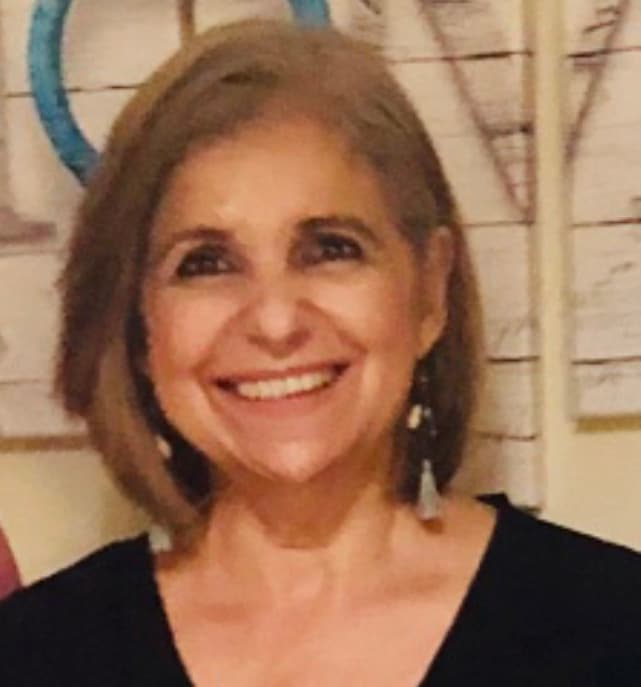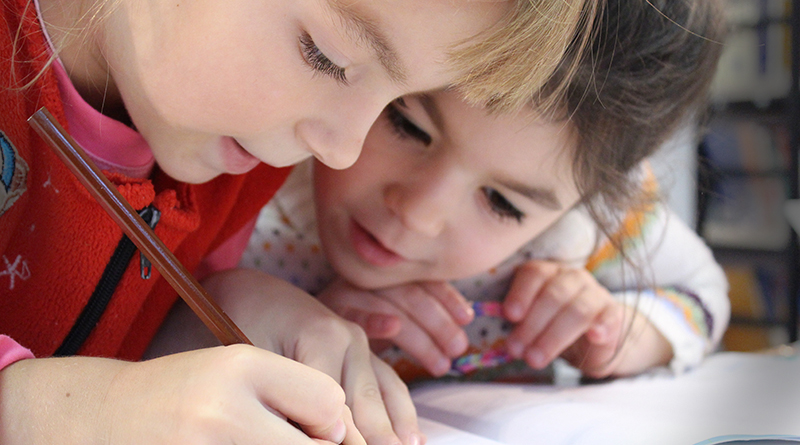
Why Educators Need Meditation
By Hilda Pacheco
Meditation to reduce stress and anxiety
This pandemic has affected all of us. The stress, the uncertainty, the fear, the anxiety, it has all been very real and very painful. We’ve all experienced a wide range of negative emotions during this difficult time. I can’t think of any one person whose life has not been affected by it. However, I would be inclined to say that depending on your job, your life has been affected to different degrees. Anybody who works in the health industry, especially front-line health care workers have been the most impacted, followed perhaps by people in the education sector. I personally know of many doctors and nurses who have already been diagnosed with PTSD due to the strain of the pandemic. I also know of many educators who after years of teaching decided to change their careers because the stress of teaching reached impossible levels.
We’re going virtual. Say what?!
As far as educators, their job as they knew it changed from one day to another without much preparation or proper knowledge of how to teach in this new virtual world. I remember that my last regular day with students sitting in front of me was March 17, 2020. After that my life as a teacher changed forever. On that day we had an emergency faculty meeting where we were told as of tomorrow, we were going to stay home and teach virtually.
Wait, what? How do I do that!
This was the same scenario for thousands of teachers, students, and parents across our nation. And even though everyone was trying to do their best to make it work, the reality is that it was chaotic.
Thinking back to those days, I really don’t know how we were able to finish the school year 2019- 2020 with a sane mind!
Things will get better by next school year!
So, we finished the school year and optimistically thought that by August, things were going to return to normal. Well as we know, nothing was farther from the truth.
The school year began, and we were surrounded by plexiglass, masks, hand sanitizer and trying to keep elementary school children 6 feet apart. We also had half of our students in school and the other half learning virtually from home. Meet the hybrid teaching model!
The school year 2020-2021 was the most difficult year of my entire 40-year career. There were many days when I thought “I can’t do this” ! “I don’t think I will survive another day”! The levels of stress and anxiety rose with every passing day. Yet, I persevered and finished the school year. I knew I could not leave my students and my peers and jump ship in the middle of a terrible storm. Nonetheless in my heart and in my soul, I knew this was to be my last year teaching. In May I informed my school that I was retiring at the end of the school year.
Meditation to Stay in Education
So how did I manage to teach under such difficult circumstances? Short answer: I meditated. Yes, you read correctly, I meditated.
Meditation has been a part of my life for the last 15 years or so. I was always used to beginning my days with a morning meditation and always felt it helped me to start the day with a better, more peaceful and happier attitude. I also used meditation with my students to begin the class. We would take two or three minutes before the start of the lesson and do a short meditation. I will talk about that later and what I observed in them as a result of our daily meditations. During the pandemic, meditation became crucial for my mental wellbeing and sanity.
How does meditation help?
Meditation helps teachers and really helps everybody in many ways. According to a recent study published in the journal Natures Communications, carried out by psychologists at Queens University in Kingston, Canada, humans have around 6,200 thoughts in a single day. Our brains don’t stop thinking! We are thinking pleasant thoughts, negative thoughts, stressful thoughts, funny thoughts, sad thoughts! All kinds of thoughts all day long!
When you meditate, you are able to clear away the information overload that builds up every day and contributes to your stress. Some of the many benefits that meditation provides are: it helps to gain a new perspective on stressful situations, it helps to build skills to manage stress, it increases self-awareness and as a result your patience and tolerance also increase. You also learn to observe your thoughts and to be less likely to be a reactionary person.
Meditation is a practice that dates back many centuries. For a long time, it has been associated with the sacred, religious, or mystical ways to try to understand life. However lately it has become a much more mainstream practice used for relaxation and stress management.
The Proof is in the Pudding
There is scientific proof that meditation significantly can help us physically. According to cardiologist Dr. Hervert Benson, known for his research on the health effects of meditation and who is the founder of the Mind/Body Institute at Harvard Medical School’s Beth Israel Deaconess Medical Center, any condition that’s caused or worsened by stress can be alleviated through meditation. In an interview with WebMd he says: “The relaxation response from meditation helps decrease metabolism, lowers blood pressure and improves heart rate, breathing and brain waves.” This has been proven numerous times by the use of MRI’s of the brains of people who are meditating. These scans show an increase in activity in the parts of the brain which control our metabolism and heart rate.
Other studies have confirmed the theory that meditation is a great and effective tool against anxiety. In a study titled “Neural Correlates Of Mindfulness Meditation Related Anxiety Relief” performed by researchers at Wake Forest Baptist Medical Center and published in the journal Social Cognitive and Affective Neuroscience they were able to identify the areas of the brain which become activated with mindfulness meditation. In this specific study scientists wanted to know the brain mechanisms involved in the connection behind mindfulness meditation and anxiety relief.
Researchers used fifteen volunteers with healthy levels of anxiety and with no previous experience with meditation. The individuals participated in a series of 20-minute mindful meditation classes. In order to identify the brain mechanisms behind mindfulness meditation, the researchers used MRI to compare the effects of mindful meditation on the different parts of the brain.
Dr. Fadel Zeldan, the postdoctoral research fellow in neurology and anatomy at Wake Forest Baptist and lead author of this study explained “Although we’ve known that meditation can reduce anxiety, we hadn’t identified the specific brain mechanisms involved in relieving anxiety in healthy individuals. In this study, we were able to see which areas of the brain were activated and which were deactivated during meditation-related anxiety relief. Anxiety was significantly reduced in every session that subjects meditated. Brain imaging found that meditation-related anxiety relief was associated with activation of the anterior cingulate cortex, ventromedial prefrontal cortex, and anterior insula. These areas of the brain are involved with executive function and the control of worrying. Meditation-related activation of these three regions was directly linked to anxiety relief.”
I encourage anyone who becomes interested in this topic to do a bit of research. You will find tons of articles with studies upon studies of the great health benefits of practicing meditation.
How do I start?
The first thing to remember when starting the practice of meditation is that there is no right or wrong way to meditate. One key element of meditation is the lack of judgment. The last thing you want is to stress over whether you are meditating correctly.
There are many ways to practice meditation and relaxation techniques. It does not matter how one chooses to meditate as long as the ultimate goal is to achieve a greater sense of inner peace.
Some known ways to meditate are:
- Guided meditation- In this type of meditation you listen to a meditation teacher who will guide you through it. There are numerous guided meditations that can be found in YouTube channels, Podcasts, Apps and Websites. There are a wide variety of topics for you to choose from, such as reducing stress, taming anxiety, helping to fall asleep and mental body scans. A great benefit of guided meditations is that you have an expert guiding you through it and it helps with lessening the distraction of our thoughts.
- Mantra meditation- In this type of meditation, you silently repeat a calming word, thought or phrase to prevent distracting thoughts.
- Mindfulness meditation- In this meditation you strive to remain mindful and aware of the present moment. You may concentrate on your senses for example. How does your incoming breath feel as it passes through your nostrils? Notice the rise of your chest as you breathe in. What are some sounds around you? You also practice becoming aware not only of your senses and your surroundings but also of your thoughts and emotions. When thoughts come in, you notice them, observe them and then you let them pass without judging them.
The above mentioned are some ways you can meditate. There are as many varieties as there are humans. One can meditate when walking, when praying, when reading inspirational texts or listening to uplifting music. For some people journaling, writing poetry or painting are the best forms of meditation. The truth is we can all find what works for each of us. As long as the elements of focused attention, relaxed breathing and open attitude are part of your practice you will be able to reap the benefits of meditation.
Meditation in the Classroom
For many years I used meditation in my classes. I used to teach six classes every day, each class had 35 students. As soon as all the students came in and settled down, we greeted each other, and I would take a few minutes to meditate with them. I would dim the lights, play some gentle peaceful music and ask them to close their eyes, guiding them to breathe in and breathe out, observing their breaths and relaxing one by one their muscles from the top of their head to the sole of their feet.
They became so used to doing this that if for some reason we were not able to start the class with our meditation, the students would always protest and complain. I have to say that somewhere in the back of my mind I sometimes would think: “Hmm, I wonder if all they really want is to take a break and have less studying time?” Then two things made me realize that starting the class this way was worthwhile. One was when one year the Valedictorian in her graduation speech said how beginning her history class every day with a meditation had helped her to have better concentration, pay more attention and have better memorization and understanding skills. She made sure she meditated on her own regularly and especially before a difficult test.
The second realization was what if my students wanted to meditate so they could take a break. That’s exactly what their brains needed. It was more confirmation that we all need to give our brains a respite from the excessive overthinking which adds so much to our stress and anxiety. Like they say, out of the mouths of babes; leave it to the young minds to know what is best for them!





